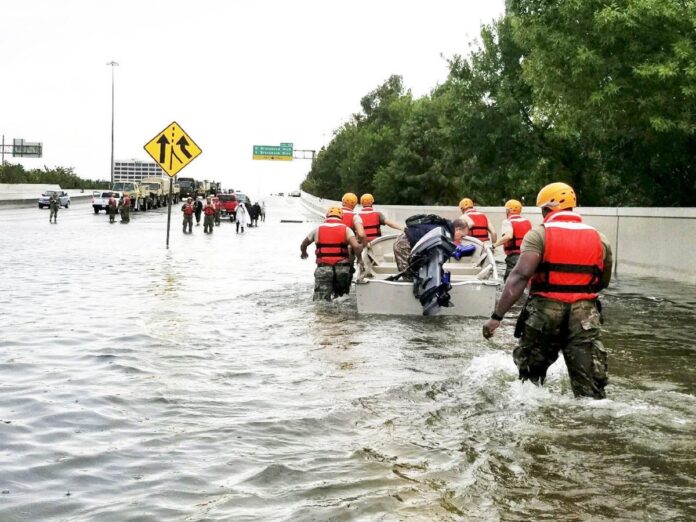SOUTH PADRE ISLAND — Forecasters are predicting the 2018 Atlantic hurricane season will have slightly above average activity.
However, the probability of a direct hit to Cameron County is low, they say.
Philip Klotzbach, a research scientist in the Department of Atmospheric Science of Colorado State University, said there will be 14 named storms, seven hurricanes and three major hurricanes.
He gave his remarks yesterday during the National Tropical Weather Conference at South Padre Island.
Klotzbach can’t predict whether this hurricane season will produce the same number of intense storms as 2017 because forecasters don’t know what path each hurricane will take.
The prediction of slightly above average activity is tied to a forecast of low development for El Nino. The high, west-blowing winds of El Nino prevent hurricanes from forming.
Colorado State University prediction models put the probability of one or more named storms making landfall in Cameron County at 8 percent. The probability of hurricane impact to Texas is about 42 percent.
The peak of hurricane season during 2017 included Harvey, Irma and Maria. Hurricane Harvey alone caused between $90 billion to $150 billion in damages and unleashed 3-5 feet of rain, Klotzbach said.
While a comparison of the strongest hurricane each year since 1950 shows a slight increase in intensity over time, he said, the storms varied widely in strength from year to year.
One factor that has given hurricanes more impact is changing demographics along U.S. coastlines, Klotzbach said. Since 1940, the population along the Atlantic and Gulf coasts has risen by 150 million.
Costal communities also are more inundated by storms as sea levels rise, he added.
Klotzbach said hurricane predictions will get more accurate as the season continues. Most storms occur after Aug. 1.
The hurricane season runs from June 1 through Nov. 30.
2018 Forecast
• 14 named storms
• 7 hurricanes
• 3 major hurricanes
What’s the difference between a hurricane and a major hurricane?
A major hurricane has winds of 111 mph or higher, meaning either a Category 3, 4 or 5.
Hurricane scale
Category 1 – 74-95 mph
Category 2 – 96-110 mph
Category 3 – 111-129 mph
Category 4 – 130-156 mph
Category 5 – 157 or higher
Category 1
Winds range from 74 to 95 mph and can be expected to produce some minor damage to property. Injuries to people and animals are generally isolated and limited to flying or falling debris. Protected glass windows generally remain intact.
Category 5
Winds at or greater than 157 mph cause catastrophic damage to property, humans, and animals. Complete or almost-complete destruction of mobile homes, frame homes, apartments, and shopping centers should be expected, and nearly all trees in the area will be snapped or uprooted. Power outages can last for weeks and possibly months.




